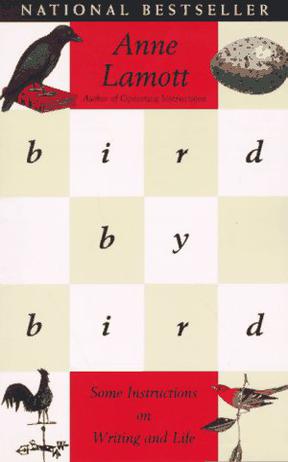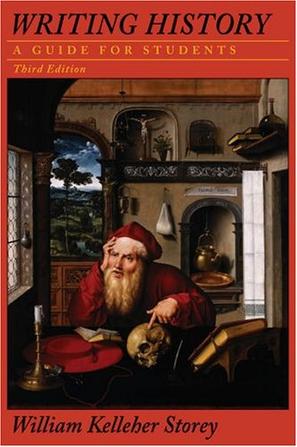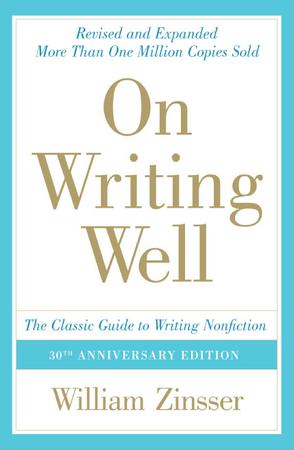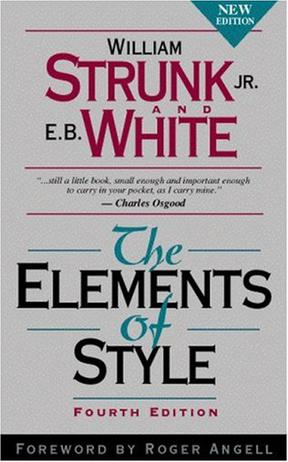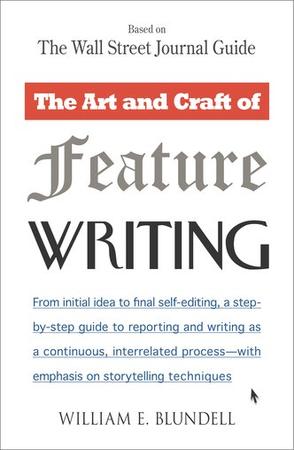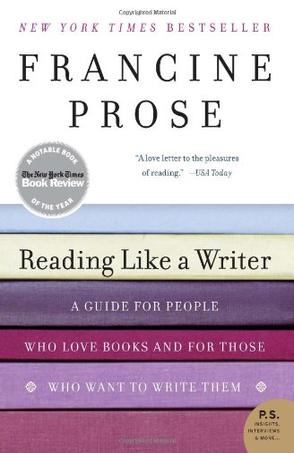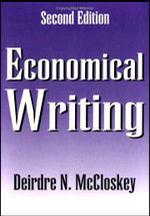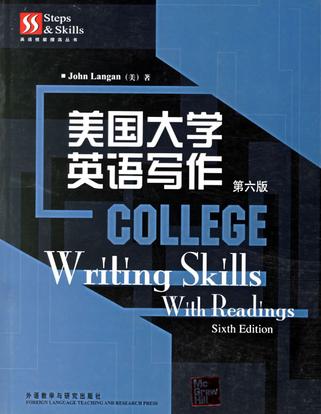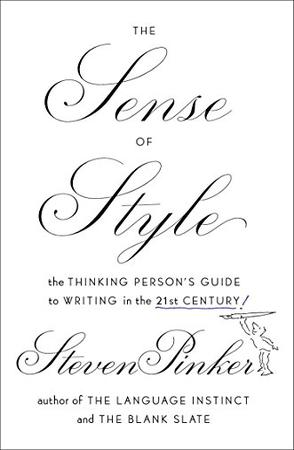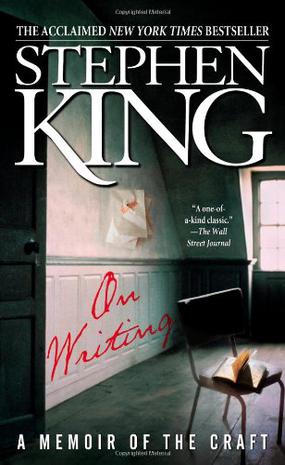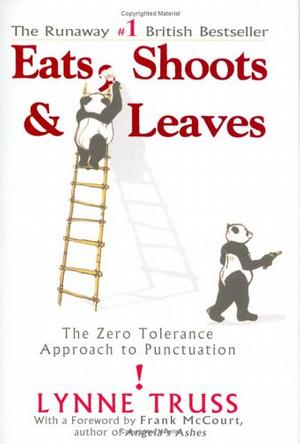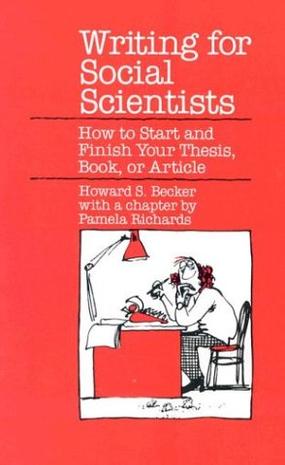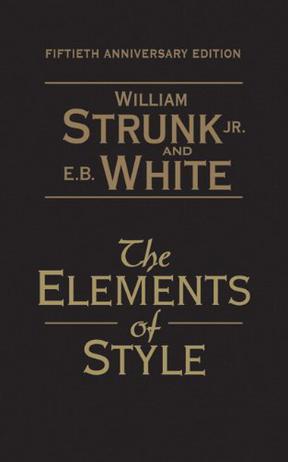欢迎来到相识电子书!
标签:writing
-
英文玩家
想写出够格英文,“玩”的元素与态度不是奢侈品而是必需品。张爱玲写英文也会生硬失色,幽默大师林语堂写英文却最能打动西方读者。老师教你斤斤计较学习文法,玩家却以文字尽显幽默机智,令你爱上英文。牛津大学出版社副总编辑林沛理导赏,浅论经典著作,细数王尔德、奥威尔、简‧奥斯汀、莎士比亚等十位英美文学巨匠写作秘诀!告诉你如何写出“好玩”作品,将英文化作嬉戏的玩具,一如画笔之于毕加索,剧本之于希区柯克。从此激活你对英文的敏感度,真正潇洒活用,而非为英文所累。 -
Writing History
Bringing together practical methods from both history and composition, Writing History provides a wealth of tips and advice to help students research and write essays for history classes. The book covers all aspects of writing about history, including finding topics and researching them, interpreting source materials, drawing inferences from sources, and constructing arguments. It concludes with three chapters that discuss writing effective sentences, using precise wording, and revising. Using numerous examples from the works of cultural, political, and social historians, WritingHistory serves as an ideal supplement to history courses that require students to conduct research. The third edition includes expanded sections on peer editing and topic selection, as well as new sections on searching and using the Internet. -
On Writing Well
"On Writing Well" has been praised for its sound advice, its clarity and the warmth of its style. It is a book for everybody who wants to learn how to write or who needs to do some writing to get through the day, as almost everybody does in the age of e-mail and the Internet. Whether you want to write about people or places, science and technology, business, sports, the arts or about yourself in the increasingly popular memoir genre, "On Writing Well" offers you fundamental priciples as well as the insights of a distinguished writer and teacher. With more than a million copies sold, this volume has stood the test of time and remains a valuable resource for writers and would-be writers. -
The Elements of Style
This book is intended for use in English courses in which the practice of composition is combined with the study of literature. It aims to give in brief space the principal requirements of plain English style. It aims to lighten the task of instructor and student by concentrating attention (in Chapters II and III) on a few essentials, the rules of usage and principles of composition most commonly violated. The numbers of the sections may be used as references in correcting manuscript. The book covers only a small portion of the field of English style, but the experience of its writer has been that once past the essentials, students profit most by individual instruction based on the problems of their own work, and that each instructor has his own body of theory, which he prefers to that offered by any textbook. The writer's colleagues in the Department of English in Cornell University have greatly helped him in the preparation of his manuscript. Mr. George McLane Wood has kindly consented to the inclusion under Rule 11 of some material from his Suggestions to Authors. The following books are recommended for reference or further study: in connection with Chapters II and IV, F. Howard Collins, Author and Printer (Henry Frowde); Chicago University Press, Manual of Style; T. L. De Vinne Correct Composition (The Century Company); Horace Hart, Rules for Compositors and Printers (Oxford University Press); George McLane Wood, Extracts from the Style-Book of the Government Printing Office (United States Geological Survey); in connection with Chapters III and V, Sir Arthur Quiller-Couch, The Art of Writing (Putnams), especially the chapter, Interlude on Jargon; George McLane Wood, Suggestions to Authors (United States Geological Survey); John Leslie Hall, English Usage (Scott, Foresman and Co.); James P. Kelly, Workmanship in Words (Little, Brown and Co.). It is an old observation that the best writers sometimes disregard the rules of rhetoric. When they do so, however, the reader will usually find in the sentence some compensating merit, attained at the cost of the violation. Unless he is certain of doing as well, he will probably do best to follow the rules. After he has learned, by their guidance, to write plain English adequate for everyday uses, let him look, for the secrets of style, to the study of the masters of literature. -
The Elements of Style
This book is intended for use in English courses in which the practice of composition is combined with the study of literature. It aims to give in brief space the principal requirements of plain English style. It aims to lighten the task of instructor and student by concentrating attention (in Chapters II and III) on a few essentials, the rules of usage and principles of composition most commonly violated. The numbers of the sections may be used as references in correcting manuscript. The book covers only a small portion of the field of English style, but the experience of its writer has been that once past the essentials, students profit most by individual instruction based on the problems of their own work, and that each instructor has his own body of theory, which he prefers to that offered by any textbook. The writer's colleagues in the Department of English in Cornell University have greatly helped him in the preparation of his manuscript. Mr. George McLane Wood has kindly consented to the inclusion under Rule 11 of some material from his Suggestions to Authors. The following books are recommended for reference or further study: in connection with Chapters II and IV, F. Howard Collins, Author and Printer (Henry Frowde); Chicago University Press, Manual of Style; T. L. De Vinne Correct Composition (The Century Company); Horace Hart, Rules for Compositors and Printers (Oxford University Press); George McLane Wood, Extracts from the Style-Book of the Government Printing Office (United States Geological Survey); in connection with Chapters III and V, Sir Arthur Quiller-Couch, The Art of Writing (Putnams), especially the chapter, Interlude on Jargon; George McLane Wood, Suggestions to Authors (United States Geological Survey); John Leslie Hall, English Usage (Scott, Foresman and Co.); James P. Kelly, Workmanship in Words (Little, Brown and Co.). It is an old observation that the best writers sometimes disregard the rules of rhetoric. When they do so, however, the reader will usually find in the sentence some compensating merit, attained at the cost of the violation. Unless he is certain of doing as well, he will probably do best to follow the rules. After he has learned, by their guidance, to write plain English adequate for everyday uses, let him look, for the secrets of style, to the study of the masters of literature. -
Reading Like a Writer
This book presents an inside look at how the professionals read and write. Long before there were creative writing workshops and degrees, how did aspiring writers learn to write? By reading the work of their predecessors and contemporaries, says the author. In "Reading Like a Writer", Prose invites you to sit by her side and take a guided tour of the tools and the tricks of the masters. She reads the work of the very best writers, Dostoyevsky, Flaubert, Kafka, Austen, Dickens, Woolf, Chekhov, and discovers why these writers endure. She takes pleasure in the long and magnificent sentences of Philip Roth and the breath-taking paragraphs of Isaac Babel; she is deeply moved by the brilliant characterization in George Eliot's "Middlemarch". She looks to John Le Carre for a lesson in how to advance plot through dialogue, to Flannery O'Connor for the cunning use of the telling detail, and to James Joyce and Katherine Mansfield who offer clever examples of how to employ gesture to create character. She cautions readers to slow down and pay attention to words, the raw material out of which literature is crafted. Written with passion, humor, and wisdom, "Reading Like a Writer" will inspire readers to return to literature with a fresh eye and an eager heart. In this entertaining and edifying New York Times best-seller, acclaimed author Francine Prose invites you to sit by her side and take a guided tour of the tools and tricks of the masters and to discover why their work has endured. Written with passion, humor, and wisdom, Reading Like a Writer will inspire listeners to return to literature with a fresh eye and an eager heart; to take pleasure in the long and magnificent sentences of Philip Roth and the breathtaking paragraphs of Isaac Babel; to look to John le Carre for a lesson in how to advance plot through dialogue; and to Flannery O'Connor for the cunning use of the telling detail. And, most importantly, she cautions listeners to slow down and pay attention to words, the raw material out of which all literature is crafted. -
美国大学英语写作
《美国大学英语写作》(第6版)本书是一部全面、系统、实用的英语写作教材,适合大学英语专业学生、非英语专业高年级学生以及其他希望提高英语写作水平的学习者使用。 -
The Sense of Style
Why is so much writing so bad, and how can we make it better? Is the English language being corrupted by texting and social media? Do the kids today even care about good writing? Why should any of us care? In The Sense of Style, the bestselling linguist and cognitive scientist Steven Pinker answers these questions and more. Rethinking the usage guide for the twenty-first century, Pinker doesn’t carp about the decline of language or recycle pet peeves from the rulebooks of a century ago. Instead, he applies insights from the sciences of language and mind to the challenge of crafting clear, coherent, and stylish prose. In this short, cheerful, and eminently practical book, Pinker shows how writing depends on imagination, empathy, coherence, grammatical knowhow, and an ability to savor and reverse engineer the good prose of others. He replaces dogma about usage with reason and evidence, allowing writers and editors to apply the guidelines judiciously, rather than robotically, being mindful of what they are designed to accomplish. Filled with examples of great and gruesome prose, Pinker shows us how the art of writing can be a form of pleasurable mastery and a fascinating intellectual topic in its own right. -
The Sense of Style
Why is so much writing so bad, and how can we make it better? Is the English language being corrupted by texting and social media? Do the kids today even care about good writing? Why should any of us care? In The Sense of Style, the bestselling linguist and cognitive scientist Steven Pinker answers these questions and more. Rethinking the usage guide for the twenty-first century, Pinker doesn’t carp about the decline of language or recycle pet peeves from the rulebooks of a century ago. Instead, he applies insights from the sciences of language and mind to the challenge of crafting clear, coherent, and stylish prose. In this short, cheerful, and eminently practical book, Pinker shows how writing depends on imagination, empathy, coherence, grammatical knowhow, and an ability to savor and reverse engineer the good prose of others. He replaces dogma about usage with reason and evidence, allowing writers and editors to apply the guidelines judiciously, rather than robotically, being mindful of what they are designed to accomplish. Filled with examples of great and gruesome prose, Pinker shows us how the art of writing can be a form of pleasurable mastery and a fascinating intellectual topic in its own right. -
On Writing
"Long live the King" hailed Entertainment Weekly upon the publication of Stephen King's On Writing. Part memoir, part master class by one of the bestselling authors of all time, this superb volume is a revealing and practical view of the writer's craft, comprising the basic tools of the trade every writer must have. King's advice is grounded in his vivid memories from childhood through his emergence as a writer, from his struggling early career to his widely reported near-fatal accident in 1999 -- and how the inextricable link between writing and living spurred his recovery. Brilliantly structured, friendly and inspiring, On Writing will empower and entertain everyone who reads it -- fans, writers, and anyone who loves a great story well told. -
The Elements of Style Illustrated
Every English-language writer knows Strunk and White's famous little writing manual, The Elements of Style. Many people between the ages of seventeen and seventy can recite the book's mantra--make every word tell--and still refer to their tattered grade school copy when in need of a hint on how to make a turn of phrase clearer, or a reminder on how to enliven prose with the active voice. Considering that millions of copies have been sold to millions of devotees, you might not think to ask what could enhance this (almost) perfect classic. In fact, the addition of illustrations allows readers to experience the book's contents in a completely new way, making the whole learning experience more colorful and clear, as well as adding a whimsical element that compliments the subtly humorous tone of the prose. The Elements of Style Illustrated will come to be known as the definitive, must-have edition. Maira Kalman is the offbeat and wildly talented illustrator of twelve children's books, numerous covers for The New Yorker magazine, fabrics for the fashion designers Isaac Mizrahi and Kate Spade, watches and accessories for the Museum of Modern Art, and a mural at the elegant Wavehill estate in Riverdale, among other projects. Her sophisticated and witty images that are yet bright and fanciful have won her a devoted following, especially among young urbanites. Maira Kalman is acknowledged by the E. B. White estate as the single artist trusted to illustrate the revered The Elements of Style. The Elements of Style Illustrated brings a fresh immediacy to the well-loved, much-valued, and still on-point work that has become an institution. While giving the classic work a jolt of new energy to appeal to contemporary readers, Kalman's illustrations are hemselves timeless, designed to sit alongside the ever-enduring manual for another fifty years and more. William Strunk and E. B. White's classic writing manual, The Elements of Style, has been enriched to include the vibrant, witty, and instantly recognizable images of Maira Kalman in a beautiful illustrated edition In her own words: "born. bucolic childhood. culture-stuffed adolescence. played piano. stopped. danced. stopped. wrote. discarded writing. drew. reinstated writing. married Tibor Kalman and collaborated at iconoclastic yet successful design studio. wrote and painted children's books. worried. took up Ping-Pong. relaxed. wrote and painted for many magazines. cofounded the Rubber Band Society. amused. children: two. dog: one." -
Eats, Shoots & Leaves
"Eats, Shoots & Leaves" has sold over 3 million copies world-wide. This illustrated version for children shows how the humble comma can change the meaning of a sentence completely. You might want to eat a huge hot dog, but a huge, hot dog would run away pretty quickly if you tried to take a bite out of him. 'Children Drive Slowly' on a road-sign doesn't quite sum up what kids do in their spare time. And we all know now that the comma in 'Eats shoots and leaves' is a crucial one. Lynne Truss and Bonnie Timmons illuminate the hilarious confusion that one mere dot with a tail can cause, in this follow-up to the number one best-seller "Eats, Shoots & Leaves" - which this time features lively and subversive pictures by one of America's leading illustrators. This picture book is sure to elicit gales of laughter and better punctuation from all who read it. -
Writing for Social Scientists
Social scientists, whether earnest graduate students or tenured faculty members, clearly know the rules that govern good writing. But for some reason they choose to ignore those guidelines and churn out turgid, pompous, and obscure prose. Distinguished sociologist Howard S. Becker, true to his calling, looks for an explanation for this bizarre behavior not in the psyches of his colleagues but in the structure of his profession. In this highly personal and inspirational volume he considers academic writing as a social activity. Both the means and the reasons for writing a thesis or article or book are socially structured by the organization of graduate study, the requirements for publication, and the conditions for promotion, and the pressures arising from these situations create the writing style so often lampooned and lamented. Drawing on his thirty-five years' experience as a researcher, writer, and teacher, Becker exposes the foibles of the academic profession to the light of sociological analysis and gentle humor. He also offers eminently useful suggestions for ways to make social scientists better and more productive writers. Among the topics discussed are how to overcome the paralyzing fears of chaos and ridicule that lead to writer's block; how to rewrite and revise, again and again; how to adopt a persona compatible with lucid prose; how to deal with that academic bugaboo, "the literature." There is also a chapter by Pamela Richards on the personal and professional risks involved in scholarly writing. In recounting his own trials and errors Becker offers his readers not a model to be slavishly imitated but an example to inspire. Throughout, his focus is on the elusive work habits that contribute to good writing, not the more easily learned rules of grammar and punctuation. Although his examples are drawn from sociological literature, his conclusions apply to all fields of social science, and indeed to all areas of scholarly endeavor. The message is clear: you don't have to write like a social scientist to be one. -
Writing for Social Scientists
Social scientists, whether earnest graduate students or tenured faculty members, clearly know the rules that govern good writing. But for some reason they choose to ignore those guidelines and churn out turgid, pompous, and obscure prose. Distinguished sociologist Howard S. Becker, true to his calling, looks for an explanation for this bizarre behavior not in the psyches of his colleagues but in the structure of his profession. In this highly personal and inspirational volume he considers academic writing as a social activity. Both the means and the reasons for writing a thesis or article or book are socially structured by the organization of graduate study, the requirements for publication, and the conditions for promotion, and the pressures arising from these situations create the writing style so often lampooned and lamented. Drawing on his thirty-five years' experience as a researcher, writer, and teacher, Becker exposes the foibles of the academic profession to the light of sociological analysis and gentle humor. He also offers eminently useful suggestions for ways to make social scientists better and more productive writers. Among the topics discussed are how to overcome the paralyzing fears of chaos and ridicule that lead to writer's block; how to rewrite and revise, again and again; how to adopt a persona compatible with lucid prose; how to deal with that academic bugaboo, "the literature." There is also a chapter by Pamela Richards on the personal and professional risks involved in scholarly writing. In recounting his own trials and errors Becker offers his readers not a model to be slavishly imitated but an example to inspire. Throughout, his focus is on the elusive work habits that contribute to good writing, not the more easily learned rules of grammar and punctuation. Although his examples are drawn from sociological literature, his conclusions apply to all fields of social science, and indeed to all areas of scholarly endeavor. The message is clear: you don't have to write like a social scientist to be one. -
The Elements of Style
You know the authors’ names. You recognize the title. You've probably used this book yourself. And now The Elements of Style –the most widely read and employed English style manual–is available in a specially bound 50th Anniversary Edition that offers the title's vast audience an opportunity to own a more durable and elegantly bound edition of this time-tested classic. Offering the same content as the Fourth Edition, revised in 1999, the new casebound 50th Anniversary Edition includes a brief overview of the book's illustrious history. Used extensively by individual writers as well as high school and college students of writing, it has conveyed the principles of English style to millions of readers. This new deluxe edition makes the perfect gift for writers of any age and ability level. Fifty Years of Acclaim for The Elements of Style , by William Strunk Jr. and E.B. White I first read Elements of Style during the summer before I went off to Exeter, and I still direct my students at Harvard to their definition about the difference between 'that' and 'which.' It is the Bible for good, clear writing.”-- Henry Louis Gates Jr. “For writers of all kinds and sizes the world begins and ends with Strunk and White’s Elements of Style . Only something to actually write abouttrumps the list of what is required to put words together in some kind of coherent way. I treasure its presence in my life and salute its fifty years of glory and accomplishment."-- Jim Lehrer “ The Elements of Style remains an unwavering beacon of light in these grammatically troubled times. I would be lost without it.” -- Ann Patchett "To the extent I know how to write clearly at all, I probably taught myself while I was teaching others -- seventh graders, in Flint, Michigan, in 1967. I taughtthem witha copy of Strunk & White lying in full view on my desk, sort of in the way the Gideons leave Bibles in cheap hotel rooms, as a way of saying to the hapless inhabitant: ‘In case your reckless ways should strand you here, there's help.’ S&W doesn't really teach you how to write, it just tantalizingly reminds you that there's an orderly wayto go about it, that clarity's ever your ideal, but -- really -- it's all going to be up to you." -- RichardFord “ The Elements of Style never seems to go out of date. Its counsel is sound and funny, wise and unpretentious. And while its precepts are a foundation of direct communication, Strunk and White do not insist on a way of writing beyond clear expression. The rest is up to the imagination, the intelligence within.” -- David Remnick, editor of The New Yorker “It’s the toughness–the irreverence and implicit laughter–that attracted me to the little book when I was seventeen. I fell in love with Strunk & White’s loathing for cant and bloviation, the ruthless cutting of crap, jargon, and extra words. For me, that skeptical directness included a tacit permission by The Elements of Style to break its rules on occasion: an alloy of generosity in the blade, a grace I still admire and still learn from.” -- Robert Pinsky “In the quest for clarity, one can have no better guides than Strunk and White. For me, their book has been invaluable and remains essential.” -- Dan Rather "Eschew surplusage! A perfect book."--Jonathan Lethem "Not until I started teaching writing and I reread The Elements of Style did I realize that most everything I would be teaching young writers, and everything I would be learning myself as a writer, was contained between the covers of this slim, elegant, wise little book. -- Julia Alvarez “Strunk and White seared their way into my brain long ago, and I benefit from them daily.” -- Steven J. Dubner, co-author of Freakonomics “Since high school, I have kept a copy of this book handy. That should be unnecessary. I should, by now, have fully internalized The Elements of Style . But sometimes I get entangled in a paragraph that refuses to be ‘clear, brief, bold.’ I dip back into The Elements of Style and am refreshed. After Scott Simon interviewed me on NPR about whether the word ‘e-mail’ needs a hyphen (yes, it does), some listeners, including friends of mine, wondered why I had answered in the affirmative when asked, in passing, ‘Are you a drunken white man?’ Those listeners misheard. ‘Strunk and White man’ was what Scott said.” -- Roy Blount Jr. “Strunk & White--writing's good-natured law firm--still contains enough sparkling good sense to clean up the whole bloviating blogosphere." -- Thomas Mallon “I used Strunk -- that’s what we called it, Strunk -- as a student at Berkeley fifty years ago. I didn't know that it was new, and that we were the first generation to be educated in The Elements of Style . I got a firm foundation in the English language, learned to write basically, and could depict the realistic world.Then I was able to become an impressionist and expressionist.” -- Maxine Hong Kingston “Strunk and White's gigantic little book must be the most readable advice on writing ever written. Side by side with Roget, Shakespeare, the Bible, and adictionary, it's an essential forevery writer's shelf.” -- X.J. Kennedy... 美国大学校园人手一册的英语语法书籍。
热门标签
下载排行榜
- 1 梦的解析:最佳译本
- 2 李鸿章全传
- 3 淡定的智慧
- 4 心理操控术
- 5 哈佛口才课
- 6 俗世奇人
- 7 日瓦戈医生
- 8 笑死你的逻辑学
- 9 历史老师没教过的历史
- 10 1分钟和陌生人成为朋友


